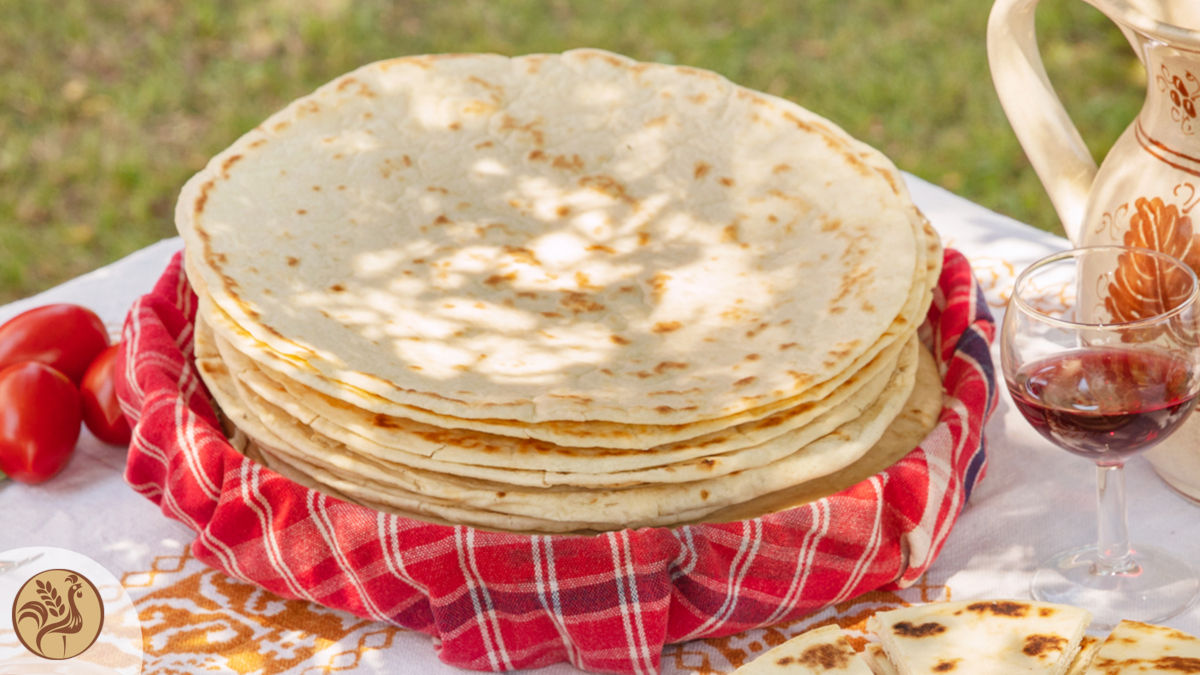Piadina Romagnola is a typical product of Emilia-Romagna made with soft wheat flour, water, fats, salt, and some optional ingredients.
It looks like a flat and circular pastry, usually thin, and is eaten in wedges or whole stuffed as desired.
There is no single recipe for piadina, but there are several local variations. The main variable is the fat component. What is important to remember, however, is that the piadina comes in two types: the classic "Piadina Romagnola", compact, crumbly, thick and smaller, and the "Piadina Romagnola alla Riminese", soft, thin and with a larger diameter.
Now it has become a national dish, loved by all Italians both for its goodness and for its simplicity and versatility, it actually has very ancient origins and tells the story of the people of Romagna. It played an important role in the poor nutrition of the local population. It was initially always and only in the tables of the Romagnole families as a substitute for leavened bread, when the latter was not available, or in times of misery when an unleavened dough was needed to fill and satiate.

Photo: copyright by Giulia Milani
The "Adzore"
The keeper of the Piadina Romagnola recipe was, and still is, the adzora.
The azdora was the matriarch, on whom the administration of the house and family depended. She was in charge of guiding the other women in the family. She was the one who went to the pier and received the catch from her husband's boat, then took care of the sale in the village and in the neighboring towns, as well as taking care of other household chores and selling the various products from the garden and poultry to the market. bred. With the proceeds of these businesses he then went shopping, buying what the family needed. It is therefore normal that it was also the custodian of the secrets of good eating, necessary for the sustenance and joy of the family.
Azdore still exist today, transformed into attentive and passionate custodians of gastronomic traditions, and continue to enjoy respect and deference.
The "testo"
The piadina then owes its unique flavor, not only to the skilled hands of the adzore, but also to the type of cooking. The history of piada is in fact indissolubly intertwined with a simple, fascinating and now almost disappeared object: the text, the only tool for cooking an original piada.... read more»
The "testo" of Romagna is a large, flat pan with a double edge on which, once hot, the piadina rests and is cooked for about a minute on each side.
Its origins date back to Roman times where the legionnaires of the troops of the Empire used to mix water and flour to then obtain thin sheets of flour and water (the historical ancestor of piadina) that they cooked on terracotta tiles.
 * Giulia Milani: passionate about gastronomy and tourism, author of the blog "Il Vaso di Pandoro", she graduated in Gastronomic Sciences and has a Master in Culture of Food and Wine for the promotion and enhancement of food and wine resources. He obtained the professional qualification as a tour leader.
* Giulia Milani: passionate about gastronomy and tourism, author of the blog "Il Vaso di Pandoro", she graduated in Gastronomic Sciences and has a Master in Culture of Food and Wine for the promotion and enhancement of food and wine resources. He obtained the professional qualification as a tour leader.
Follow her on Facebook.
